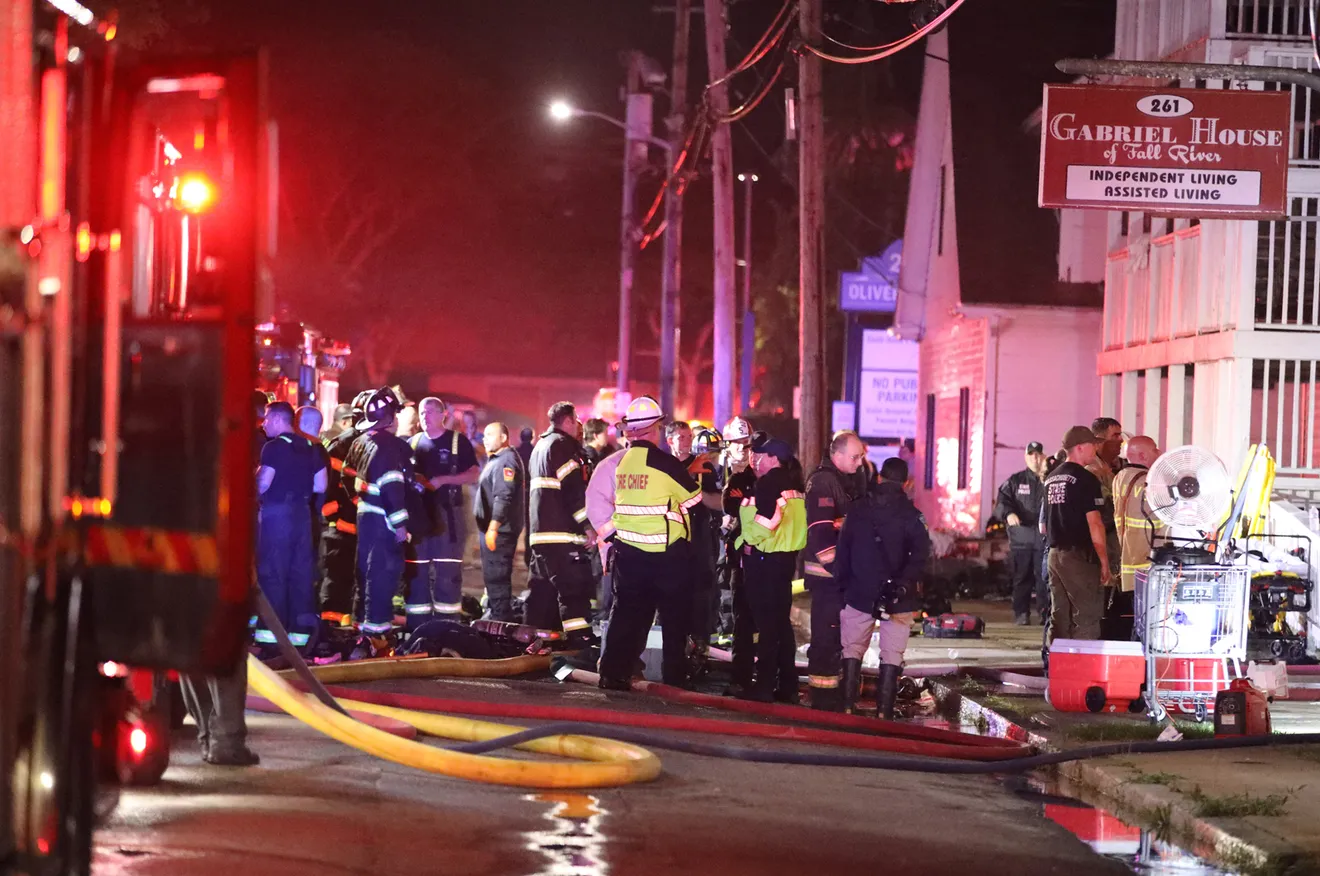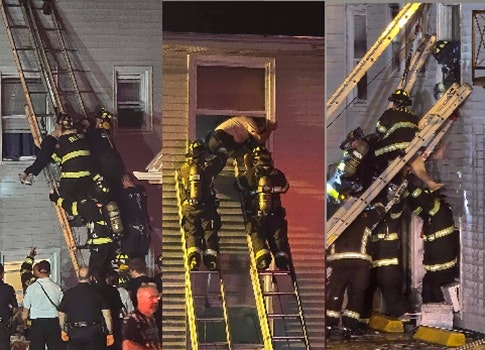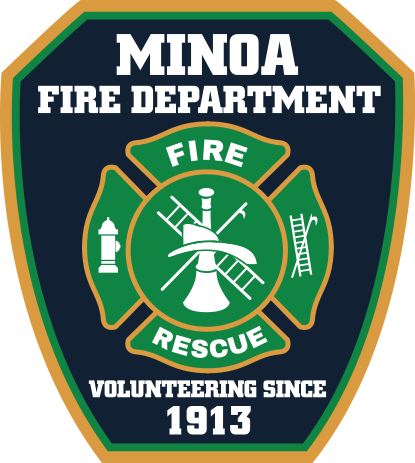Fall River (NEW)

Heroism Among Destruction
The fire at the Gabriel House assisted-living facility in Fall River, Massachusetts, on July 13, 2025, was a devastating five-alarm residential blaze that claimed nine lives and left more than 30 injured, including five firefighters. One resident sustained critical burns. Firefighters, police officers, EMS personnel, and even bystanders responded with urgency and bravery under extremely challenging conditions, rescuing dozens and preventing what could have been an even greater tragedy.
The alarm was reported between 9:30 and 9:50 p.m. Flames quickly consumed one wing of the three-story building, while thick smoke spread rapidly through common areas. Responders arrived to a chaotic scene — residents were seen hanging from windows and calling for help, prompting immediate ladder rescues.
Arrival & Initial Response
Every available Fall River firefighter, police officer, EMS worker — and even neighbors — rushed into action. They carried non-ambulatory seniors, broke through windows, and used ladders to reach upper floors, all while navigating thick smoke and fire. Their actions, widely praised by officials and the community, are credited with saving many lives. However, the emergency also highlighted longstanding concerns about staffing levels and resource limitations within the Fall River Fire Department.
Under the command of Fire Chief Jeffrey Bacon, the department initiated a five-alarm response involving about 50 firefighters, including 30 off-duty personnel who were recalled to duty. Police were among the first on the scene, entering the building without protective gear to assist residents. Mutual-aid assistance came from surrounding communities, including Somerset, Swansea, Westport (MA), and Portsmouth and Tiverton (RI). The response was a coordinated, multi-agency effort.

Search & Rescue Operations
Fire crews encountered heavy smoke and flames at the building’s main entrance. Inside, many elderly residents — some using wheelchairs or oxygen — were trapped. Several were seen at windows calling for help. Firefighters deployed ground ladders to reach upper floors. In one instance, a firefighter broke through a window to rescue Lorraine Ferrara, carrying her safely down a ladder.
Neighbors also played a critical role, setting up ladders and assisting in evacuations. One resident was lowered feet-first by a firefighter and a neighbor working in tandem — just one of many stories of courage that night.
Containment & Medical Support
Within approximately 50 minutes, crews had successfully contained the fire to one wing of the building, preventing further spread. On-site EMS personnel quickly established a triage area. Firefighters and police coordinated transportation of the injured to hospitals
The fire claimed the lives of nine residents, ranging in age from 61 to 86. More than 30 others were injured, including one critically. Five firefighters were also treated for non-life-threatening injuries and later released.
Coordination Across Agencies
Authorities established a family notification center at a local hospital chapel, and emergency shelters were opened for displaced residents. The multi-agency response showcased extraordinary cooperation under pressure, as teams worked across disciplines to manage rescue, medical, and logistical needs.
Performance & Reflection
Numerous acts of heroism were reported — police and firefighters entering smoke-filled corridors, residents being rescued from upper floors, and civilians assisting in real time.
Fire Chief Jeffrey Bacon described the rescue effort as “spectacular work under chaos,” emphasizing the deadly danger of smoke and urging increased public awareness around smoke detectors and evacuation planning.
Despite the success in saving lives, some responders and union leaders raised concerns. Edward Kelly of the International Association of Fire Fighters (IAFF) and Fall River union president Michael O’Reagan said the department was chronically understaffed, asserting that “what we had was not enough” and that eight additional firefighters could have made a difference.
Mayor Paul Coogan and Chief Bacon defended the city’s staffing levels, stating that while more personnel might have improved efficiency, it was unlikely that “any number of responders” could have saved every life. Chief Bacon acknowledged the concern, calling staffing “a valid question,” while stopping short of attributing outcomes to it directly.
Praise and Criticism
Governor Maura Healey, Mayor Coogan, and Chief Bacon praised the efforts of first responders, crediting their heroism with limiting further loss of life. Police were also commended for their role in rescuing numerous residents during the earliest and most dangerous moments of the fire.
In contrast, the facility’s staff drew harsh criticism from survivors. Some residents claimed that employees failed to assist or even warn others as the building filled with smoke. One survivor, Robert Cabral, said: “They didn’t knock on one door. They just ran.”
Origin of the Fire
The cause of the fire remains under investigation by the Fall River Fire Department, the Massachusetts State Fire Marshal, State Police, and the Bristol County District Attorney’s Office. Early indications suggest the fire does not appear suspicious, and investigators are examining potential accidental causes such as electrical or mechanical failure.

